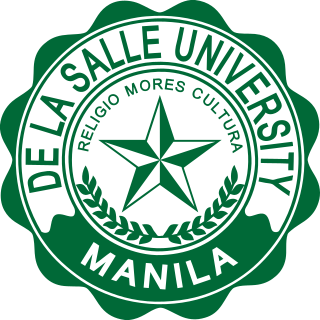
De La Salle University, also referred to as DLSU, De La Salle or La Salle, is a private, Catholic coeducational research university run by the Institute of the Brothers of the Christian Schools with main campus in Taft Avenue, Malate, Manila, Philippines. It was established by the Christian Brothers in 1911 as De La Salle College (DLSC) in Nozaleda Street, Paco, Manila with Blimond Pierre Eilenbecker, FSC serving as director, and is the first De La Salle school in the Philippines. The college was granted university status on February 19, 1975, and is the oldest constituent of De La Salle Philippines (DLSP), a network of 16 educational institutions, established in 2006 replacing the De La Salle University System.

La Salle Green Hills ("LSGH") is a private Catholic school run by the Philippine District of the Institute of the Brothers of the Christian Schools in Ortigas Avenue, Mandaluyong, Metro Manila, Philippines. It was established in 1959 by the De La Salle Brothers led by Brother H. Gabriel Connon, FSC primarily to provide more slots to students wishing to avail of the then very popular De La Salle primary education offered in Taft Avenue, Manila.

De La Salle Lipa, also known by its acronym DLSL, is a private Catholic Lasallian basic and higher educational institution run by the De La Salle Brothers of the Philippine District of the Christian Brothers in Lipa City, Batangas, Philippines and was founded in 1962. It is one of the third generation of La Salle schools founded by the Catholic religious congregation De La Salle Brothers in the Philippines: La Salle Academy-Iligan in 1958, La Salle Green Hills (Mandaluyong) in 1959, Saint Joseph School-La Salle in 1960 and De La Salle Lipa in 1962.

The De La Salle Santiago Zobel School, also referred to by its acronym DLSZ or De La Salle Zobel, is a private Catholic basic education institution for boys and girls run by the Philippine District of the De La Salle Brothers in Muntinlupa, Metro Manila, Philippines. It was opened in 1978 by the De La Salle Brothers because of the increasing number of students in the grade school department of the former De La Salle College in Manila.

De La Salle Philippines (DLSP), established in 2006, is a network of Lasallian educational institutions within the Lasallian East Asia District established to facilitate collaboration in the Lasallian Mission and the promotion of the Spirit Of Faith, Zeal For Service and Communion In Mission. There are currently sixteen Lasallian Educational Institutions in the Philippines. De La Salle Philippines replaced the De La Salle University System which was established under the presidency of Br. Andrew Gonzalez FSC in 1987 as a response to the rapid expansion of Lasallian educational institutions nationwide. De La Salle Philippines is a member of a network of over 1,100 Lasallian educational institutions in 80 countries.
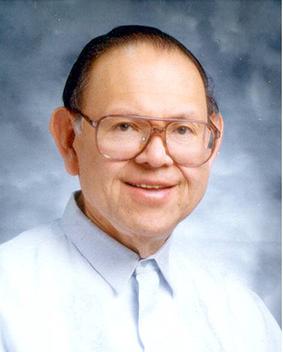
Brother Andrew Benjamin Gonzalez, F.S.C. was a Filipino linguist, writer, educator, and a De La Salle Brother. He served as president of De La Salle University from 1979 to 1991 and from 1994 to 1998. From 1998 to 2001 he served as Secretary of the Department of Education, Culture and Sports under the presidency of Joseph Estrada. After his term ended, he returned to De La Salle University as vice president for Academics and Research from 2001 to 2003 and as Presidential Adviser for Academics and Research from 2003 to 2005.
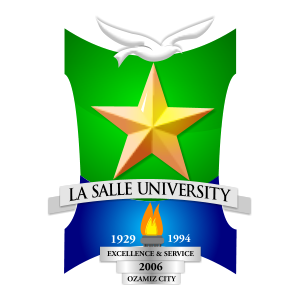
La Salle University Ozamiz, Inc. is a private Catholic Lasallian coeducational basic and higher education institution run by the Philippine District of the Christian Brothers in Ozamiz City, Misamis Occidental Philippines. It is a member of De La Salle Philippines, a network of Lasallian educational institutions within the Lasallian East Asia District.

Jaime Hilario Integrated School – La Salle is a Lasallian co-educational primary and secondary school located in Bagac, Bataan, in the Philippines. It was opened by the De La Salle Brothers in 2006 to cater to the farming and fishing community. It is the 16th school of De La Salle Philippines, a network of Lasallian schools in the Philippines.
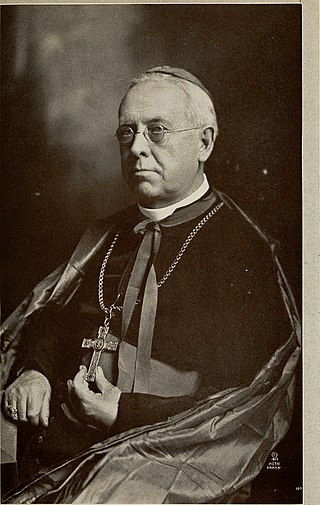
Jeremiah James Harty was an American prelate of the Catholic Church. He served as the 26th archbishop of the Archdiocese of Manila in the Philippines from 1903 to 1916. He later served as bishop of the Diocese of Omaha in Nebraska from 1916 until his death in 1927.
Rafael S. Donato F.S.C. was a Filipino De La Salle Brother and a President of De La Salle University Manila, University of St. La Salle, De La Salle Lipa, La Salle Green Hills and De La Salle Araneta University.

Hyacinth Gabriel Connon, F.S.C., was a Lasallian Brother and President of De La Salle University in Manila from 1950 to 1959 and 1966 to 1978, the second president to have served two terms in the history of the university, the first being Brother Acisclus Michael, F.S.C. He had the longest time to exert his influence on the university, initially for nine years, subsequently for twelve for a total of twenty-one years.
Brother Crescentius Richard, F.S.C., was an American De La Salle Brother who was instrumental in the transformation of the De La Salle University in the Philippines into a pillar of Philippine education. He was President of De La Salle University from 1961 to 1966 and was named its President Emeritus in 1981.
Brother Albinus Peter Graves, F.S.C., was an American Lasallian Brother who was last posted to the De La Salle Brothers in the Philippines and was a President of De La Salle College in Manila.

Brother Egbert Xavier Kelly, F.S.C. (1894–1945) was an Irish De La Salle Brother who was last assigned to the De La Salle Brothers in the Philippines and was kidnapped and then murdered by the retreating Japanese Imperial Forces at the De La Salle College, of which he was President, during the Allied Liberation of Manila during World War II.

Brother Lucian Athanasius Reinhart, F.S.C. was an American De La Salle Brother who was last assigned to the De La Salle Brothers in the Philippines and was a President of De La Salle College in Manila.

Brother Antony Ferdinand Kilbourn FSC was an American De La Salle Brother who was last assigned to the De La Salle Brothers in the Philippines and was Acting President of the De La Salle College in Manila while Brother Lucian Athanasius Reinhart, F.S.C., was on leave.
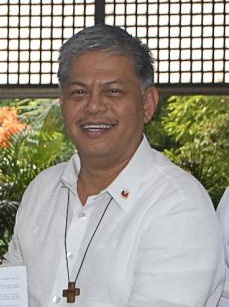
Brother Armin Altamirano Luistro, FSC is a Filipino Lasallian Brother who served as secretary of the Department of Education of the Philippines under President Benigno Aquino III. Luistro entered De La Salle Scholasticate in Manila in April 1979 while he was studying in De La Salle University (DLSU). He received the religious habit of the congregation in October 1981 at the La Salle Novitiate in Lipa. He professed his first religious vows in October 1982, and his final vows in May 1988.
The De La Salle Brothers in Myanmar are part of the Institute of the Brothers of the Christian Schools, the largest congregation of Roman Catholic religious Brothers who are exclusively dedicated to education. The Institute was founded in Reims, France in 1680, with over 75,000 Brothers and lay colleagues who conduct schools as well as educational works in about 80 countries worldwide. It is now under the Lasallian Brothers in the Philippine District.

The Chapel of the Most Blessed Sacrament is the main and largest chapel of De La Salle University in Manila, Philippines. It is located on the second floor of the southernmost wing of the St. La Salle Hall, the oldest building of the university. The chapel was designed in Art Deco style by the commissioned architect, Tomás Mapúa. Built in the 1930s, the chapel pews were hewn from narra and carried the Signum Fidei Star, the sign of faith and the symbol of the De La Salle Brothers.

The history of De La Salle University dates back to 1911, when the Christian Brothers opened the De La Salle College (DLSC) in Nozaleda Street, Paco, Manila, Philippines. It is the first La Salle school established by the Christian Brothers in the Philippines, and the oldest constituent of De La Salle Philippines (DLSP), a network of 16 Lasallian educational institutions established in 2006 replacing the De La Salle University System.



















